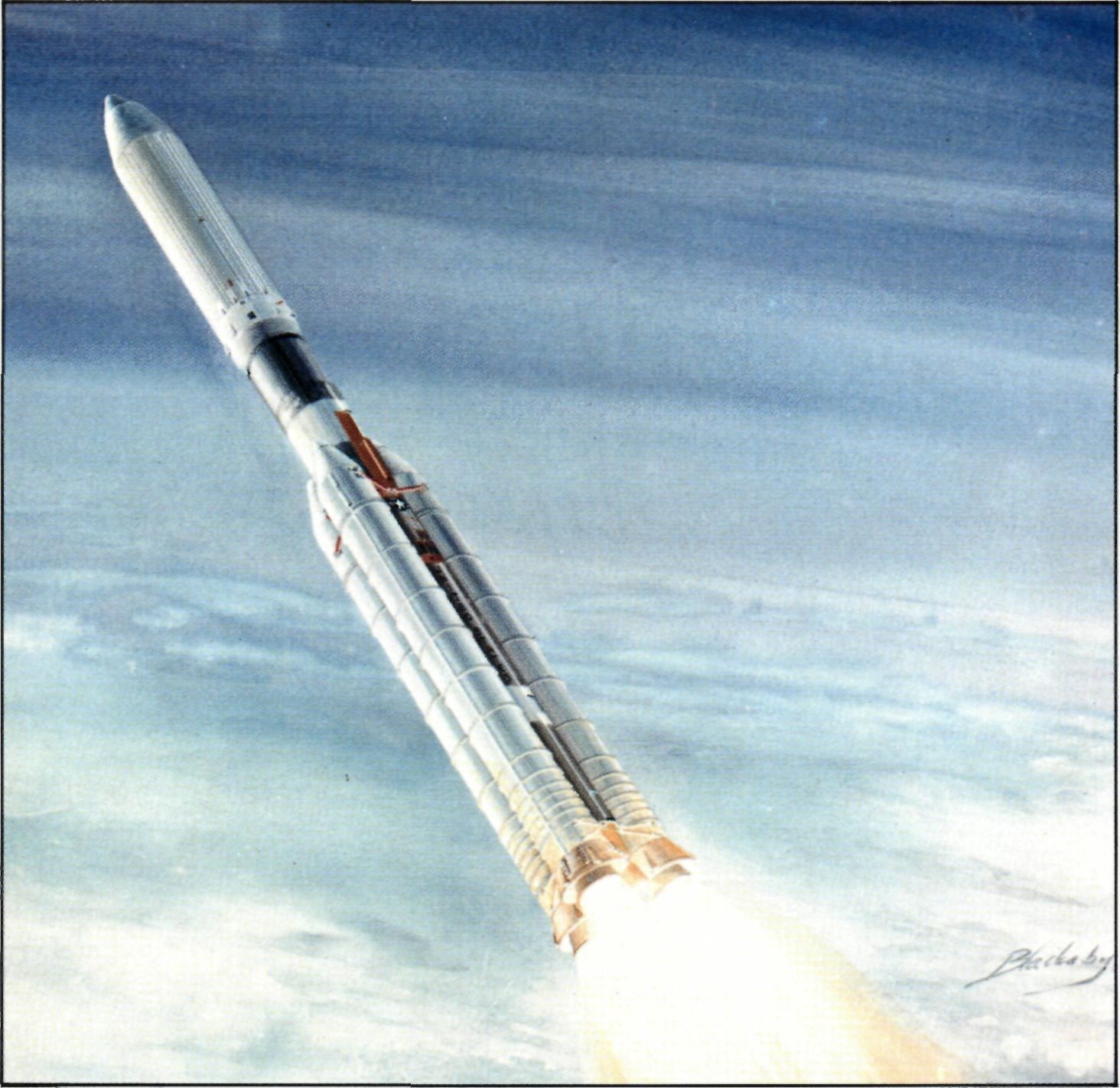Feb 062010
A bit of artwork published in 1988 (possibly dating from before) showing a Titan IV variant or derivative with three SRBs rather than the usual two SRMs:
Those certainly look like Shuttle booster rockets to me, indicating that the core is probably larger in diameter than the standard Titan core. Probably four rocket engines on the core rather than the usual two.
Of course, Titans with larger cores and extra boosters were not new ideas, even in 1988. See, for example, the “Titan 2+2” from 1965.
UPDATE: since this was originally posted, more information on this design came to light, and was used for “US Launch Vehicle Projects #3.”
5 Responses to “Three-banger Titan”
Sorry, the comment form is closed at this time.

Assuming that is the same payload fairing as a Titan 34D or Titan IV that would support the idea of a fatter core. Next question is what would they need that much power for to lift what is in the relatively small fairing? (Small compared to a shuttle bay that is.)
My guess would be DoD payloads, such as Zenith Star.
That’s a variant of the McDonnell-Douglas “Barbarian” booster, which was to be used to carry the Zenith Star chemical laser into orbit:
http://www.astronautix.com/lvs/baranmdd.htm
http://www.astronautix.com/lvs/barianmm.htm
It’s halfway between the two above versions, using the three Shuttle SRBs on a increased diameter four-engined Titan core.
Here’s a illustration of what Zenith Star may have looked like:
http://www.gstatic.com/hostedimg/356d8d3675dbfd67_large
I get the sense that most of the Titan variants proposed in the 80’s (multiple SRB’s, hydrogen-core Titan 5, etc) were somewhat desperate attempts at keeping Titan production going. Titan IV successfully made it from the drawing board to reality because it was was a straightforward evolution of the Titan III series (with SRB’s originally designed for MOL.) Adding additional SRB’s changes your launch infrastructure and creates what’s essentially an all-new vehicle.
Nevertheless, it’s an interesting glimpse of the space dreams from the 80’s that never came to be.